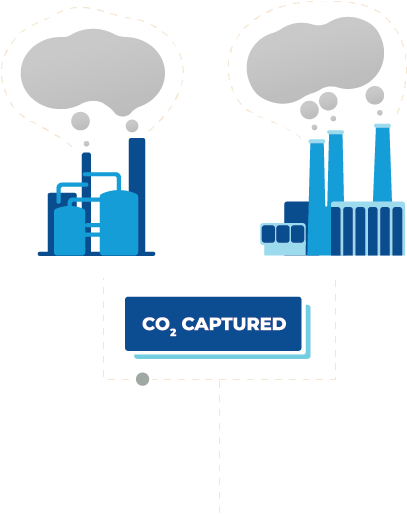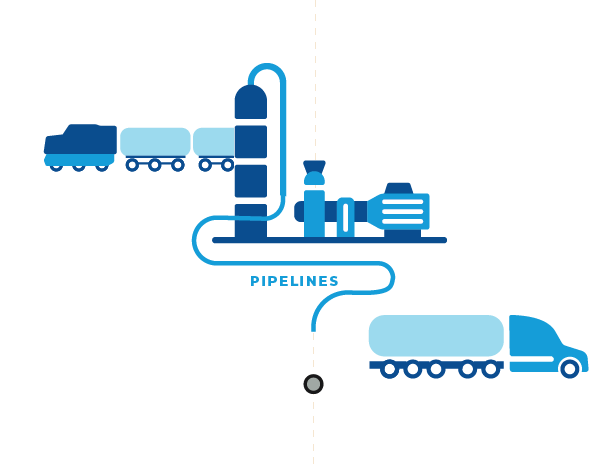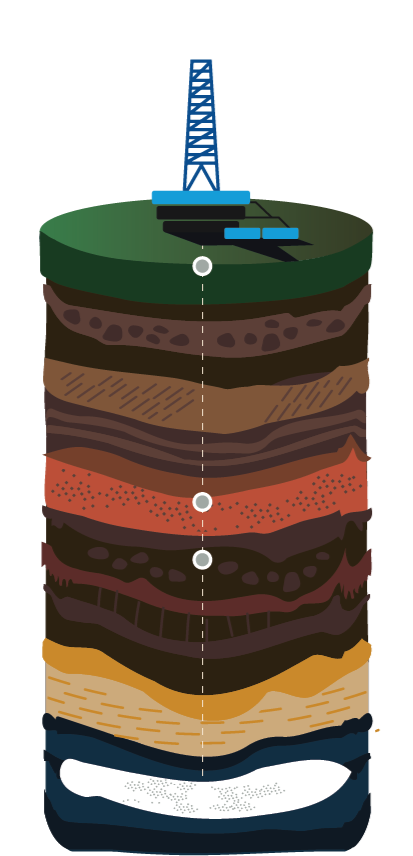Carbon dioxide storage can help build a lower carbon future
Permanent, safe storage is designed to keep CO₂ emissions from entering the atmosphere
CO₂ storage is a safe technology that has been deployed around the world
Bayou Bend seeks to develop a large-scale carbon dioxide storage project in Southeast Texas. CO2 storage at scale can play an important role in advancing a lower carbon future. Carbon dioxide transportation by pipeline has been used for several decades, with more than 5,000 miles of operating CO2 pipelines throughout the United States. Close, continuous monitoring supports pipeline safety and helps maintain the stability of the stored CO2 deep underground.
Carbon dioxide emissions can be captured before they enter the atmosphere.
Refineries, manufacturing plants, petrochemical plants, power plants and other industries play critical roles in Southeast Texas and typically produce CO2 emissions. In some cases, carbon dioxide can be captured at the source, rather than enter the atmosphere.

Carbon dioxide emissions, once captured, can be transported to one of Bayou Bend’s planned storage locations to be permanently stored underground.
Once CO₂ emissions have been captured, they are prepared for transportation. Often concentrated or pressurized, CO2 moves through pipelines. Transport can also take place by rail, trucking, or cargo ship.

Bayou Bend will seek to transport the CO₂ by pipeline and inject it thousands of feet underground for permanent storage.
Once captured, CO2 is turned into a supercritical fluid and stored thousands of feet below the Earth’s surface, where it can be contained in impermeable rock. There, it will be continuously monitored. Bayou Bend will offer both onshore and offshore storage, seeking to maximize storage capacity and opportunity for industry access.
